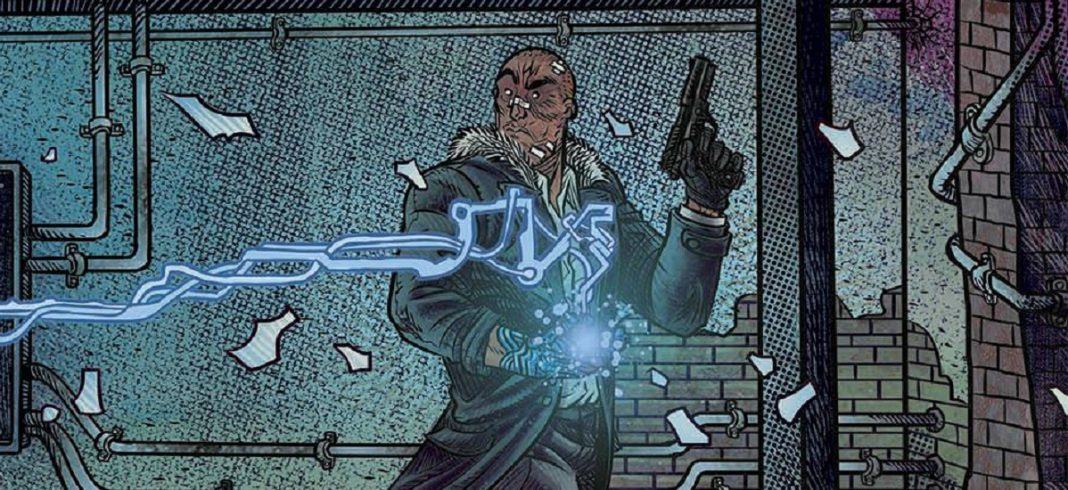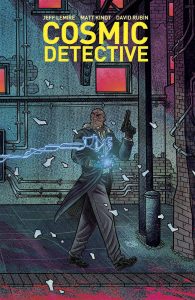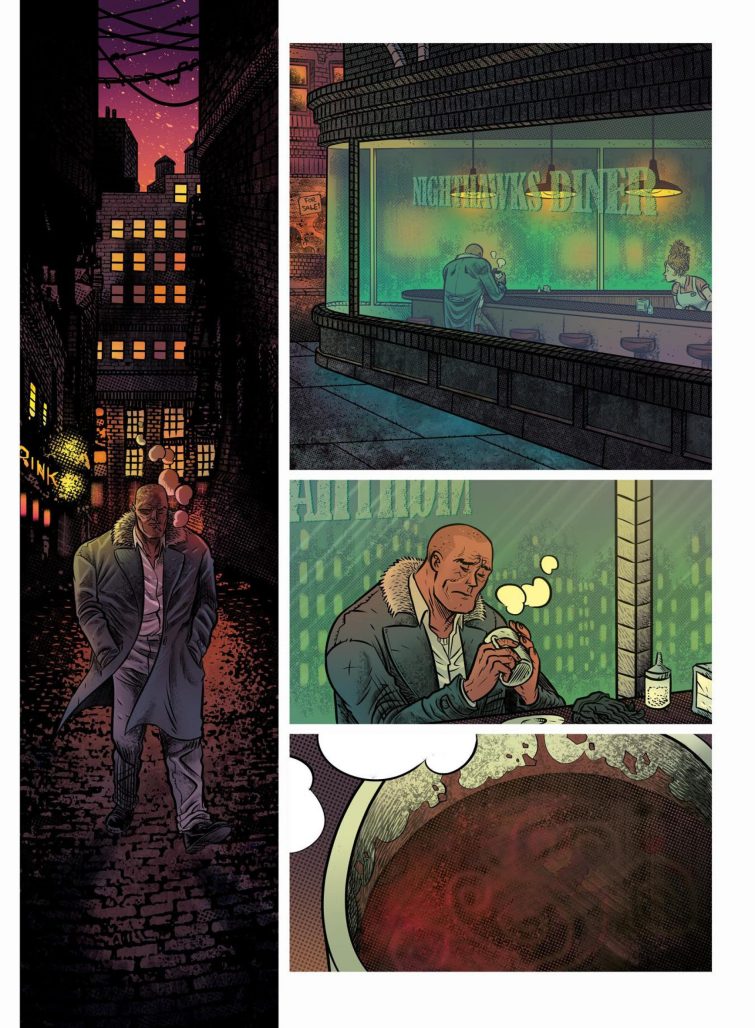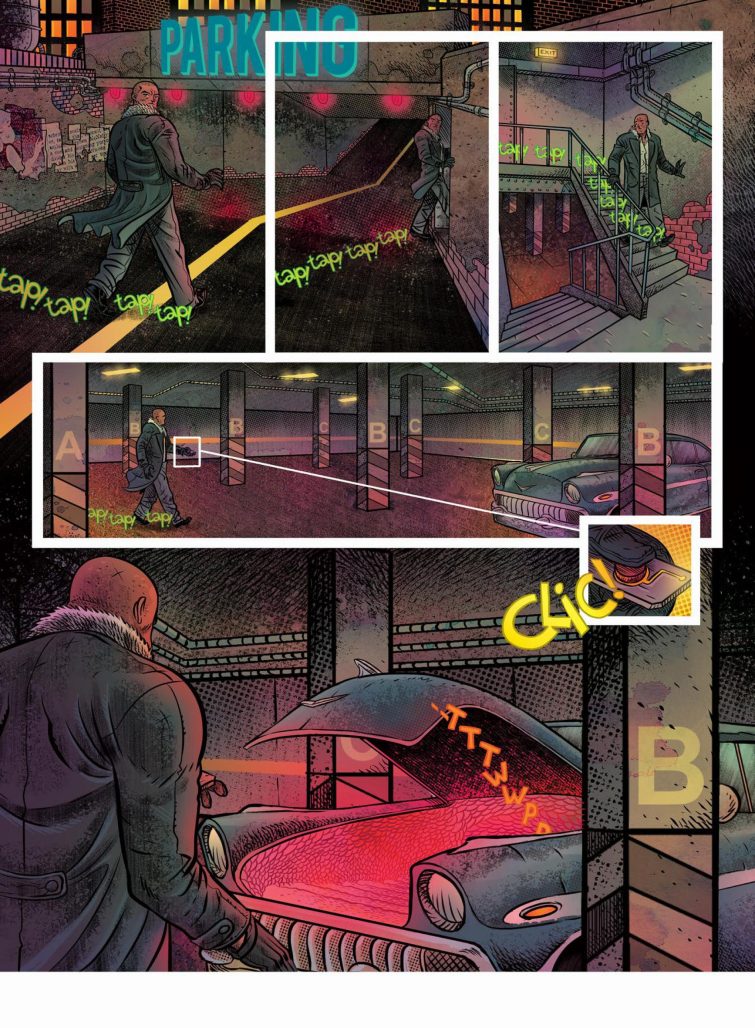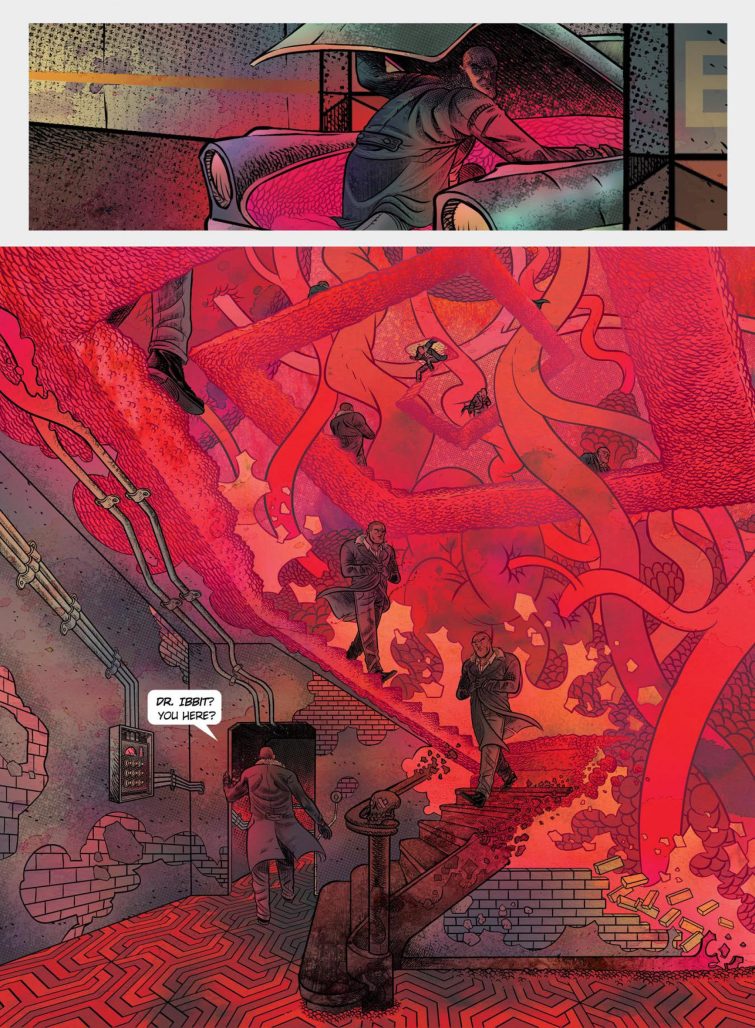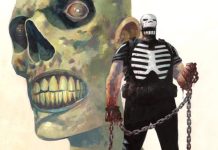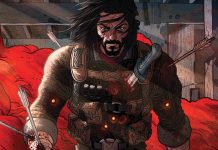 Cosmic Detective
Cosmic Detective
Writers: Jeff Lemire, Matt Kindt
Art and Letters: David Rubín
Flatter: Xulia Pisón, Kike J. Díaz
Designer: Matt Kindt, David Rubín
Publisher: Image Comics
Publication Date: September 20, 2023
In the credits for Cosmic Detective, there is a dedication to Jack Kirby “who shows to all of us that anything is possible on the comic-book pages.” This reads not only as a tribute to the King of Comics, but also a way to put him into conversation directly with the modernist art and existential musings present in this book. Kirby in all his work showed us how visual complexity is always underpinned by emotional clarity. Every practiced form and gesture has to connect to us on a simple, clear level. As these moments build up, the complexity forms naturally, panel by panel, page by page.
Cosmic Detective — by Jeff Lemire, Matt Kindt, and David Rubín — is a masterclass in exactly this way: painting intricate, complex images always underpinned by clear emotional stakes and a grounded point of view. On our journey through this world, David Rubín connects Jack Kirby’s influence to everything from Edward Hopper to Fritz Lang.
These are not mere allusions, but go a long way in expressing the existential dread of the individual in society that bridges Kirby to the world of modernist art.
The world we’re inhabiting is not quite Cyber Punk but certainly close to films like Blade Runner with the familiar dark alleyways and sometimes gothic architectural sensibilities. But in the middle of that are extremely vibrant colors that capture the “cosmic” side of this book. We’re treated to bright reds and yellows, all warm colors that contrast the cold atmosphere of the cityscape. The colors often act as transitional elements from various setpieces and help remind us that even our main character often feels out of place, ripped from his comfort zone by jarring modes of transportation.
Lemire and Kindt’s script here takes advantage of how much emotion can be packed into Rubín’s art without needing to fill the pages with exposition. The layouts and to-the-point dialogue has an understated quality that only serves to enhance the struggles of our main character while he uncovers the mystery of who could have killed a God. A majority of sequences in the book have Lemire and Kindt directing our detective from place to place via bizarre forms of teleportation and coded dialogue. Rubín is then allowed to shine by creating not only lush two-page spreads of a body being broken down and reassembled in a hellish move from one location to the other, but also allowed to express atmosphere and character in simple touches like the “tap tap tap” of the lettering when someone walks up stairs.
While Lemire and Kindt’s script is understated, it is by no means underwritten. A clear exploration emerges of the state of the individual in a harsh reality where they are brought face to face with their own cosmic insignificance. The detective rarely has words for us because he himself is simply thrust from one place to another, being advised to stay away from this case not for any nefarious reasons but to simply spare his feelings upon discovering the truth. Unlike most noirs or mysteries, our detective is not entirely alone either, he actually has a family he loves and visits which runs counter to the need to purely solve a mystery. The comic then asks us: is knowing the truth worth more than the people you love?
While this partnership is a first for Lemire, Kindt and Rubín, there is a larger connection to Lemire’s other work. The questions of religion and humanity’s place in the universe, as well the use of cosmic, Lovecraftian entities that go beyond words or defy explanation, are frequent aspects of Lemire’s science fiction. Here, however, the question is less about Religion or Gods specifically, but about the nature of truth. The world is defined here by certain expectations, certain realities that are possible. The premise is founded on something that should be impossible, and the ongoing investigation is the uncovering of a truth that breaks with our experience of reality. In this way, Lemire, Kindt and Rubín are exploring how truth is not merely about the facts of the matter but the stories we are told and the mythologies we create.
Once again, this elicits a strong connection to the Jack Kirby dedication where Kirby’s expansive mythologies in works like The Fourth World, Kamandi and O.M.A.C. contain similar ideas. In these stories the richness of the art in combination with the clarity of emotions create a dissent effect that helps us to question simple truths about the laws of the universe, how the world came to be as it is, and what our individual purpose is. All of which feel intensely alive in Cosmic Detective which distills down the core of what’s possible in comics in a way that speaks to a well of massive existential questions.
Cosmic Detective is a treat from cover-to-cover. While it plays as a tribute to the work, style and thematic concerns of Jack Kirby, it also operates perfectly on its own terms as a classic sci-fi murder mystery. David Rubín’s art is not to be missed, depicting intense, beautiful splash pages that always keep us in the character’s head and maintain an emotional intimacy in concert with the cosmic horrors. Lemire and Kindt’s first partnership is off to a glorious success, feeling at home with their larger body of work while also containing a flavor we haven’t haven’t had quite as much of before. Overall, Cosmic Detective is bound to become a classic that’s both an enjoyable read and gives you plenty to reflect on.
Verdict: BUY
Check The Beat’s review section for a new graphic novel review every Friday in 2023! And make sure to read TRADE RATING each Thursday for a review of collected material!
Cosmic Detective is available now!


